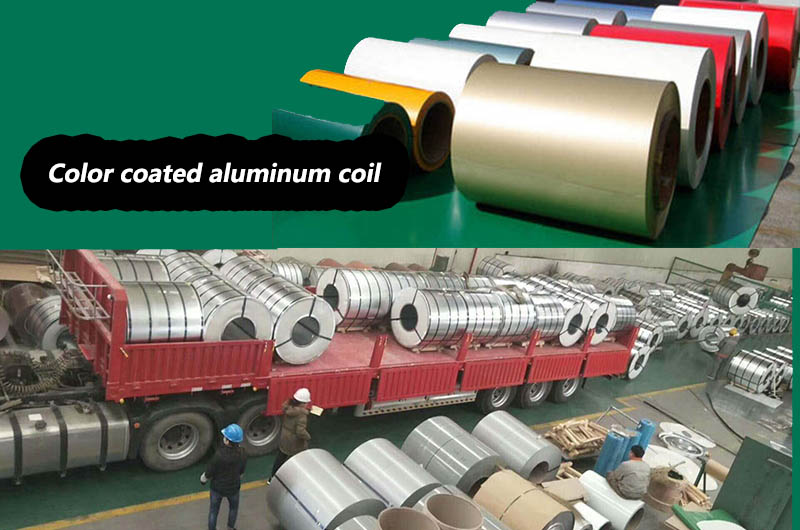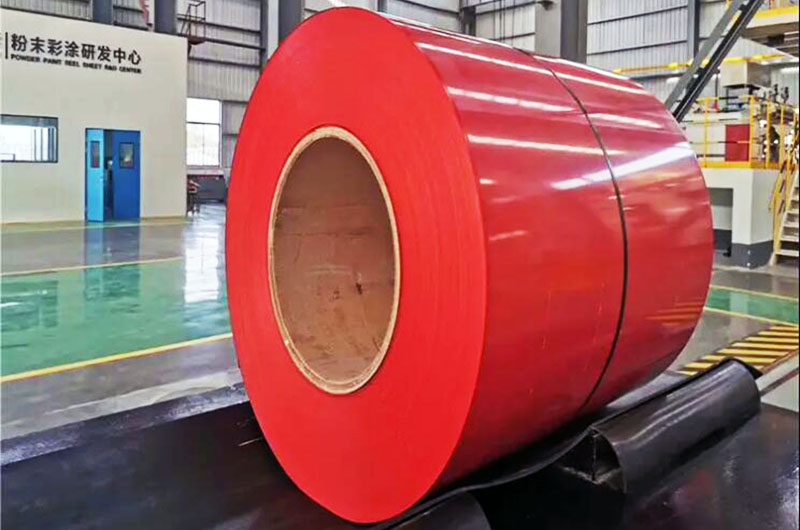Color coated aluminum coil process parameter information
- 1. Base material selection: The base material of color-coated aluminum coils is usually made of high-quality aluminum alloy materials, which have the characteristics of good corrosion resistance, high strength and lightweight, and are suitable for different environments and uses. (How to choose color-coated aluminum coil base material)
- 2. Coating type: The coating of color-coated aluminum coils usually includes primer and topcoat. These coatings can provide protection to the aluminum surface from oxidation, corrosion and ultraviolet rays. Common coating types include polyester, polyvinyl fluoride, polyurethane, etc. Different types of coatings have different properties and application ranges.
- 3. Color selection: Color-coated aluminum coils can provide a variety of color choices to meet the decoration needs of different buildings, transportation and other fields. Color selection is usually determined by customer needs and design requirements.
- 4. Coating process: The coating process of color-coated aluminum coils includes two main steps: coating and baking.
- Coating is to apply the paint evenly on the surface of the aluminum coil to ensure the uniformity and adhesion of the coating;
- Baking is a high-temperature treatment that solidifies and hardens the coating to form a surface with better weather resistance and durability.
- 5. Surface treatment: The surface of color-coated aluminum coils can be treated differently, such as anti-oxidation treatment, wire drawing treatment, etc., to improve its surface quality and decorative performance.
- 6. Scope of application: Color-coated aluminum coils are widely used in construction, transportation, electronic products and other fields, and can be used to manufacture various decorative and structural materials such as aluminum plates, aluminum tubes, and aluminum strips.
Generally speaking, color-coated aluminum coils use coating and baking processes to make aluminum coils have rich color choices, good decorative properties and weather resistance, and are suitable for applications in many fields.

Frequently asked questions about color-coated aluminum coils
Q: What are the main types of surface-coated aluminum coils?
A: Surface-coated aluminum coils are mainly divided into polyester (PE)-coated aluminum coils and fluorocarbon (PVDF)-coated aluminum coils.
Q: What is the difference between polyester (PE) coated aluminum coil and fluorocarbon (PVDF) coated aluminum coil?
A: PE-coated aluminum coils are usually cheaper and suitable for general environments, while PVDF-coated aluminum coils have higher weather resistance and corrosion resistance and are suitable for more severe climate conditions and long-term use.
Q: What are the characteristics of double-sided coated aluminum coils coated with fluorocarbon and polyester?
A: Double-sided coated aluminum coils combine the economy of polyester with the high weather resistance of fluorocarbon and are suitable for the needs of different environments.
Q: What is double-sided fluorocarbon coated aluminum coil?
A: Double-sided fluorocarbon coated aluminum coils are coated with fluorocarbon coatings on both sides of the aluminum coil, providing high weather resistance and decorative properties on both sides, and are suitable for applications requiring higher appearance quality.
Q: What effect does coating thickness have on coated aluminum coils?
A: The coating thickness directly affects the performance and use of coated aluminum coils. Coatings are generally divided into single coating and double coating.

Q: What is the coating thickness range for a single layer coating?
A: The coating thickness of a single-layer coating is usually between 4μm and 20μm, which is suitable for general construction, decoration and other applications and is economical.
Q: What is the coating thickness range for double layer coating?
A: The coating thickness of double-layer coating is usually between 25μm and 28μm. Compared with single-layer coating, it has better weather resistance and corrosion resistance, and is suitable for more severe climate conditions and long-term use.
Q: What factors affect the selection of coating thickness?
A: The choice of coating thickness usually depends on the specific application needs, including factors such as environmental conditions, decorative effect and expected service life.
Q: Does increased coating thickness mean better performance?
A: Yes, in general, increasing the coating thickness can improve the weather resistance and corrosion resistance of the coating, but cost and actual needs also need to be considered comprehensively.
Q: What are the common base materials for color-coated aluminum coils?
1 Series Aluminum Alloy: For example, 1050 aluminum coil, with an aluminum content of 99.5%, is a pure aluminum material and is often used for general decoration and applications with less stringent requirements.
3 series aluminum alloy: For example, 3003 aluminum coil has good corrosion resistance and formability, and is commonly used in construction, vehicles, home appliances and other fields.
5 series aluminum alloys: such as 5052 and 5005 aluminum coils, which have high strength and good corrosion resistance and are suitable for applications requiring higher strength and weather resistance.
3xxx, 5xxx series aluminum alloys: These two series of aluminum coils are widely used in the manufacture of color-coated aluminum coils because they have good processing performance and forming performance, and can also meet the needs of construction, transportation and other fields.
When selecting a base material, specific application scenarios and performance requirements will affect the choice of aluminum alloy. Different aluminum alloys have different strengths, corrosion resistance and formability. Therefore, when producing color-coated aluminum coils, it is necessary to select the appropriate base material according to specific needs.

